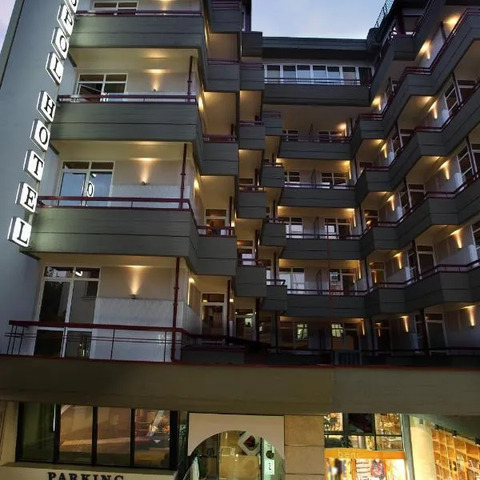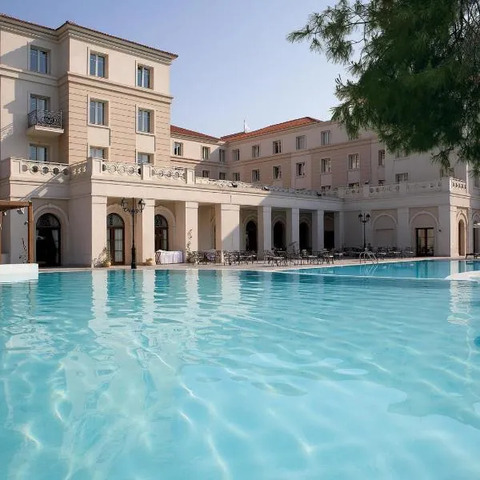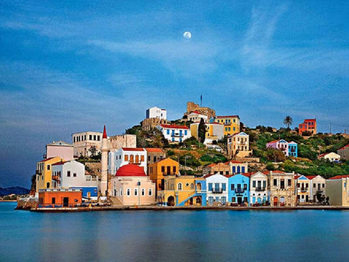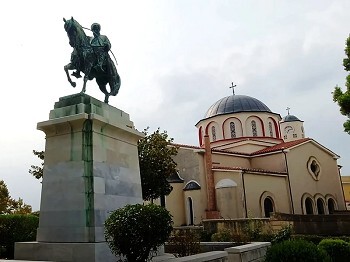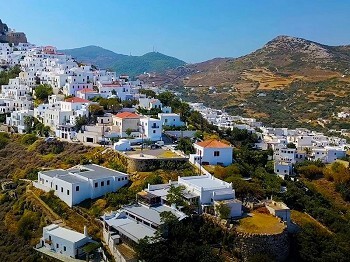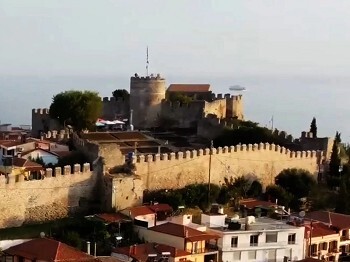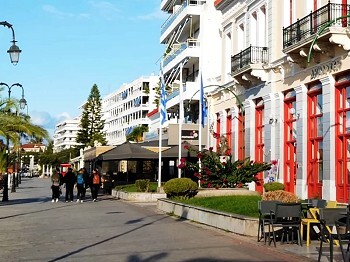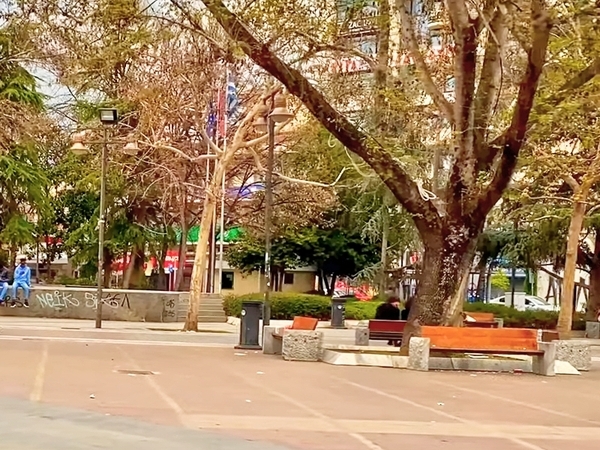
Larisa City, nestled in the heart of Thessaly, Greece, is a treasure trove of historical sites and ancient Landmarks. This vibrant city, steeped in rich history, offers a captivating journey through time for history enthusiasts and casual travelers alike. From ancient Ruins to Byzantine churches, Larisa City is a living testament to its illustrious past. In this article, we will delve into the must-visit historical sites in Larisa City, providing a glimpse into the city's diverse cultural and historical landscape.
We suggest for your stay:
Still Looking for the Perfect Stay?
1. The Ancient Theater of Larisa: A Marvel of Classical Architecture
The Ancient Theater of Larisa, dating back to the 3rd century BC, stands as one of the city's most significant archaeological sites. This ancient Theater, once a center for dramatic Performances, showcases classical Greek Architecture and provides insights into the cultural life of ancient Larisa. The theater's well-preserved structure includes the stage, auditorium, and various architectural details that reflect its historical grandeur.
Visitors to the Theater can marvel at the remnants of the seating arrangements and the intricate designs that have survived through centuries. The site also hosts occasional cultural events, offering a unique opportunity to Experience classical Performances in a historically authentic Setting.
2. The Asclepius Sanctuary: A Sacred Place of Healing
The Sanctuary of Asclepius, dedicated to the ancient Greek god of healing, is another fascinating historical site in Larisa City. This sanctuary, which Dates back to the 4th century BC, was once a prominent center for medical practices and religious rituals. The Ruins of the sanctuary include remnants of temples, baths, and other structures used for healing ceremonies and rituals.
Exploring the sanctuary provides a glimpse into ancient Greek medicine and the religious practices associated with healing. The site’s serene Atmosphere and Historical significance make it a compelling destination for those interested in ancient medicine and religious history.

3. The Byzantine Fortress of Larisa: A Fortress with a Strategic Past
The Byzantine Fortress of Larisa, perched on a hill overlooking the city, offers panoramic Views and a deep dive into medieval military history. Originally constructed in the 6th century AD, the fortress played a crucial role in defending the city from various invasions. The fortress's strategic location and robust construction reflect its importance in the Byzantine era.
Visitors can explore the remnants of the fortress walls, towers, and gates while gaining insight into the military strategies and architectural techniques used during the Byzantine period. The fortress also provides stunning Views of Larisa and its surroundings, making it a popular spot for photography and Sightseeing.
4. The Roman Forum of Larisa: Echoes of Roman Urban Life
The Roman Forum of Larisa, a significant archaeological site, offers a glimpse into the city's Roman-era urban layout and public life. The forum, which served as the center of civic and commercial activities, features Remains of public buildings, streets, and shops. The site's layout provides valuable information about Roman urban planning and the daily life of its inhabitants.
Walking through the forum's Ruins, visitors can imagine the bustling activity that once characterized this area. The remnants of columns, pavements, and other architectural elements Highlight the forum's historical importance and its role in shaping Larisa's urban landscape.

5. The Church of Agios Achillios: Byzantine Architecture and Religious Heritage
The Church of Agios Achillios, an important Byzantine church located in the heart of Larisa, stands out for its Architectural beauty and religious Significance. Built in the 11th century AD, this church features intricate Frescoes, mosaics, and architectural elements characteristic of Byzantine religious structures.
The church's interior is adorned with well-preserved Frescoes depicting various religious scenes, offering a visual narrative of Byzantine art and religious devotion. The Church of Agios Achillios is not only a place of worship but also a testament to the artistic and architectural achievements of the Byzantine era.
6. The Larisa Archaeological Museum: A Comprehensive Historical Overview
The Larisa Archaeological Museum is a must-visit destination for anyone interested in the region's rich history. The museum houses an Extensive collection of Artifacts from various historical periods, including prehistoric, classical, Roman, and Byzantine eras. Exhibits include Pottery, Sculptures, inscriptions, and other Artifacts that provide a comprehensive overview of Larisa's historical development.
The museum's well-curated displays and informative Exhibits offer visitors a deeper understanding of the city's historical and cultural evolution. The museum also hosts temporary Exhibitions and educational programs, making it a dynamic and engaging destination for history lovers.

7. The Roman Aqueduct: Engineering Marvel of Antiquity
The Roman Aqueduct of Larisa, an impressive feat of ancient engineering, was once vital for supplying Water to the city. This aqueduct, which Dates back to the 1st century AD, features an intricate system of channels and arches that Highlight the advanced engineering skills of the Romans.
Exploring the Remains of the aqueduct allows visitors to appreciate the sophistication of Roman hydraulic engineering and the importance of Water supply in ancient urban centers. The aqueduct's remnants, though partially ruined, still convey the grandeur of Roman infrastructure and its impact on city life.
8. The Odeon of Larisa: A Venue for Classical Performances
The Odeon of Larisa, an ancient concert hall dating back to the 2nd century AD, is another notable historical site in the city. This structure, used for musical and theatrical Performances, reflects the cultural importance of the arts in ancient Larisa. The odeon's seating arrangements and acoustics provide insights into the architectural considerations for Performances in antiquity.
Visitors to the odeon can explore the Remains of the stage and seating area, imagining the vibrant Performances that once took place within its walls. The site offers a glimpse into the artistic and cultural life of ancient Larisa and serves as a reminder of the city's rich cultural Heritage.

Conclusion: Embracing Larisa’s Historical Legacy
Larisa City, with its diverse array of historical sites, offers a fascinating journey through Greece’s rich past. From ancient theaters and Byzantine churches to Roman forums and aqueducts, each site provides a unique perspective on the city’s historical and cultural evolution. Exploring these Landmarks not only enriches our understanding of Larisa’s Heritage but also allows us to connect with the enduring legacy of its ancient inhabitants.
Whether you are a history enthusiast, a cultural explorer, or simply curious about Greece’s past, Larisa City’s historical sites promise an unforgettable Experience. Plan your visit to uncover the stories etched in stone and Experience the timeless allure of this remarkable city.
